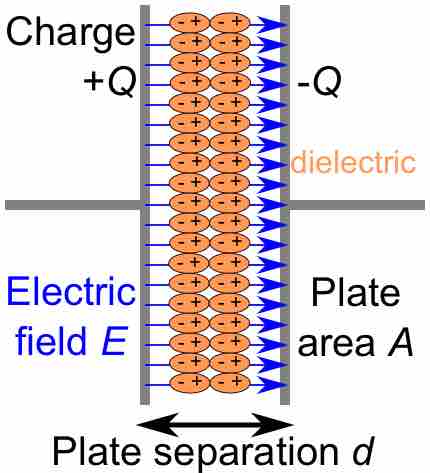Overview
A capacitor is an electrical component used to store energy in an electric field. Capacitors can take many forms, but all involve two conductors separated by a dielectric material. For the purpose of this atom, we will focus on parallel-plate capacitors .

Diagram of a Parallel-Plate Capacitor
Charges in the dielectric material line up to oppose the charges of each plate of the capacitor. An electric field is created between the plates of the capacitor as charge builds on each plate.
Capacitance
All capacitors collect charge on the two, separate conductive surfaces; one side is positive and the other negative. An electric field is created as charge builds on the opposite surfaces, storing energy. The dielectric between the conductors is meant to act as an insulator, preventing charge from bridging the gap between the two plates. Such dielectrics are commonly composed of glass, air, paper, or empty space (a vacuum). In practice, dielectrics do not act as perfect insulators, and permit a small amount of leakage current to pass through them.
Capacitors are limited in their ability to prevent charge flow from one conductive surface to the other; their ability to hold charge is measured in Farads (F), which are defined as 1 ampere-second per volt, one joule per square volt and one Coulomb per volt, among other ways.
For a parallel-plate capacitor, capacitance (C) is related to dielectric permittivity (ε), surface area (A), and separation between the plates (d):
Voltage (V) of a capacitor is related to distance between the plates, dielectric permittivity, conductor surface area, and charge (Q) on the plates:
Depending on the dielectric strength (Eds) and distance (d) between plates, a capacitor will "break" at a certain voltage (Vbd). This is calculated by: